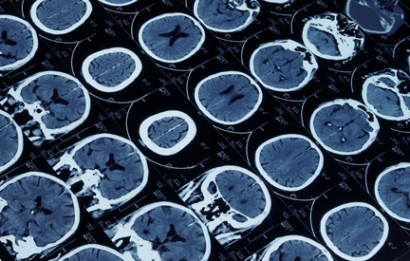News
Review outlines three stages of addiction, addresses criticisms of disease model

Research on the neurobiology of addiction reveals a complex, chronic brain disease with three recurring stages. In a recent New England Journal of Medicine article, three of the most distinguished scientists in the addiction field, Dr. Nora Volkow, Director of NIDA, Dr. George Koob, Director of NIAAA, and Dr. A. Thomas McLellan, Founder of Treatment Research Institute and former Deputy Director of the Office of National Drug Control Policy, review dozens of scientific studies in order to clarify the biological mechanisms involved in addiction and to increase understanding of what happens behaviorally when these biological processes are disrupted.
“Although the brain disease model of addiction has yielded effective preventive measures, treatment interventions, and public health policies to address substance-use disorders, the underlying concept of substance abuse as a brain disease continues to be questioned, perhaps because the aberrant, impulsive, and compulsive behaviors that are characteristic of addiction have not been clearly tied to neurobiology,” the authors state. In the review, the authors discuss recent advances in the field and conclude that neuroscience continues to support the brain disease model of addiction. Providing a framework for how addiction works in the brain is critical for multiple reasons, as greater understanding amongst physicians, scientists, lawmakers and the public can drive the development and implementation of better treatments and public policies for those who suffer from addiction.
The authors outline three key stages of addiction, which are not necessarily distinct:
- Binge and intoxication – Increased dopamine release occurs in the reward centers of the brain in response to substance use. When repeatedly exposed to the same reward, dopamine cells switch from firing in response to the actual reward and instead fire in anticipation of the reward when presented with a conditioned stimuli, or cue. Thus, environmental cues that are associated with substance use, such as seeing or talking to a person with whom drugs or alcohol were used, can result in dopamine release surges that elicit cravings and lead to substance use and binging. Cues become deeply ingrained and can trigger cravings even after long periods of abstinence. Also notable, dopamine release in response to natural rewards such as food or sex will stop when the reward is delivered and desire satiated. But, “addictive drugs circumvent natural satiation and continue to directly increase dopamine levels, a factor that helps to explain why compulsive behaviors are more likely to emerge when people use drugs than when they pursue a natural reward.”
- Withdrawal and negative affect – Repeated use results in regulation of dopamine levels in response to substance use. The high is not as high; the user experiences a dysphoric state and decreased stress tolerance. Continued use is necessary for the user to feel normal. The brain’s reward system now prioritizes the potent effect of the drugs over usual reward triggers like food, social interaction, sexual behavior, and good decision-making.
- Preoccupation and anticipation – Changes in the brain as a result of prolonged substance use reduce dopamine production, dulling the brain’s sensitivity to pleasure, while impairing executive processes that control self-regulation and decision-making. The user is unable to resist strong urges or follow through on decisions, explaining why a user may be sincere in their desire to abstain, yet unable to follow through. Substance use becomes a compulsive behavior.
Approximately 10% of those exposed to addictive substances become addicted, according to the article. Factors affecting whether an individual will become addicted are:
- Family history of addiction
- Early exposure to drug use
- Exposure to high-risk environments (characterized as stressful environments with poor familial and social support and a permissive attitude toward drug use combined with easy access)
- Certain behavioral health conditions such as mood or anxiety disorders, ADHD, or psychoses
Addiction emerges gradually, with the onset of symptoms predominantly in adolescence, when the areas of the brain involved in self-regulation are still forming and are particularly vulnerable. Prevention can be effective. Prevention strategies tailored to the individual should include screening for risk factors, early signs of substance use, and mental health problems. If prevention has failed and treatment is needed, medications can help prevent relapse while the brain is allowed to heal. Strategies that enhance brain response to natural reward cues like exercise and social contact are helpful, as are strategies to increase stress tolerance and mitigate negative emotional states. Reducing exposure to triggers and working to improve the brain’s executive functions and self-regulation are also key.
The authors state that evidence-based, prevention-oriented interventions, in conjunction with appropriate health policies, will have the greatest effect in changing outcomes. They outline key changes in public policy that have resulted from the idea of addiction as a disease, including the Mental Health Parity and Addiction Equity Act, and the parity provision in the Affordable Care Act, both of which ensure that mental health and addiction services will be covered by insurance policies at the same level as any other disease. These changes are key to increasing access to treatment. Integration of primary care with specialty behavioral health care can also improve the ways in which substance use disorders are managed, as well as screening for and treating addiction-related health conditions such as HIV, hepatitis C, cancer, cirrhosis, and trauma.
The authors state, “A more comprehensive understanding of the brain disease model of addiction may help to moderate some of the moral judgment attached to addictive behaviors and foster more scientific and public health–oriented approaches to prevention and treatment.”